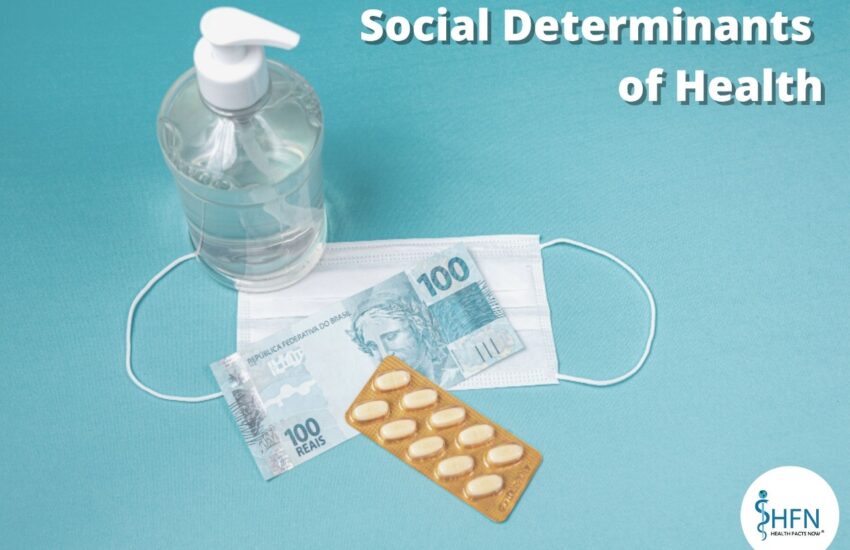The test of our progress is not whether we add more to the abundance of those who have much; it is whether we provide enough for those who have too little”
– Franklin Delano Roosevelt
“Of all the forms of inequality, injustice in health care is the most shocking and inhumane”
-Martin Luther King Jr
Introduction
Nowadays, one of the approaches used in medical studies is the analysis through the social determinants of health, which involve social conditions that affect the differences in the health status of people both individually and collectively. The importance of the study of these determinants lies in the fact that, in the field of health, disparities and social inequalities are evident, above all, in vulnerable populations. In this article, important concepts will be addressed to understand the social determinants of health, and what has been their incidence during the pandemic caused by the SARS-CoV-2 virus.
Social Determinants of Health
Public health, under its construction and consolidation process as a modern discipline, has developed different conceptions and methodologies to analyze and understand social determinants of health, which have come to be configured as a conceptual and theoretical basis. [1]
The social determinants of health have been defined by the World Health Organization (WHO) as the situations according to which people are born, develop, work, live and age.[2] It even considers the broader set of forces and systems that influence the circumstances of daily life, which may have to do with economic policies and systems, development programs, social norms and policies, political systems, the digital gap, among others. These conditions can vary significantly between subgroups of a population and this will undoubtedly affect health outcomes.
The Public Health Agency of Canada has identified 12 determinants of health: income and social status, social support networks, education and literacy, employment and working conditions, social environments, physical environments, personal health practices and coping skills, development healthy children, biology and genetic endowment, health services, gender, and culture.[3] The social determinants of health, added to the current global circumstances that we face due to the pandemic, have exacerbated inequality and disproportionately affected the poorest and most vulnerable, particularly women and children. It is possible that these differences could be inevitable, in such cases they are considered inequalities (for example, biological and genetic differences that may occur). On the other hand, it is possible that the differences are unnecessary and avoidable (for example, in education and literacy). These are considered inequities and therefore, in those cases, the design of appropriate goals for public policies that increase equity are necessary.[4]
Social determinants of health and the pandemic
In different countries, the spread of the virus has been uneven both in incidence and prevalence.[5] In this sense, pandemics are more damaging when there are high rates of poverty, racial segregation, and low educational levels in the population. For example, it has been shown that the incidence of the new coronavirus disease is higher in areas with a higher level of socioeconomic vulnerability.[6]
One study used information from 23 European countries between March 1 and April 30 of 2020 to analyze the situation. Data from COVID-19 cases diagnosed by Johns Hopkins University, data from the European Social Survey, and other sources were used to estimate bivariate associations between cumulative reported case numbers and various social, demographic, and economic variables. The study analyzed the association of social, economic, and demographic factors in the initial spread of the COVID-19 disease. The results showed that, throughout the analyzed period, population density, social factors, and the spread of COVID-19 cases were strongly and directly correlated. In other words, the aforementioned factors contributed to the initial spread of the COVID-19 pandemic and the exponential increase in cases.[7]
Also, the findings concluded that the implementation of strict restrictions on mobility from the beginning of a pandemic is crucial to stop the spread of the virus, especially in densely populated and economically, socially, and culturally vibrant countries. Similarly, based on the results, the study recommends for future outbreaks of epidemics like the coronavirus that when vaccines are not yet available, there should be very strict travel restrictions and social distancing measures.[8]
In addition to the previously mentioned social and economic factors, there is another barrier that exacerbates inequality: connectivity. Undoubtedly, the digital divide in both urban and rural areas represent major obstacles to health, especially among racial minorities, the population with limited resources and those who have difficulty accessing medicines.[9]
Social determinants of health in Latin America: Advances or setbacks?
Leadership in Latin America has been assumed by the Pan American Health Organization (PAHO). PAHO in its 2008-2012 action plan defined as one of its strategic objectives the improvement of equity in health, integrating favorable approaches to poor people, and incorporating criteria that are sensitive to gender and human rights issues.[10] Populations that have shown improvements in access and universal health coverage in the region due to three factors: (1) advances in economic and social development, (2) the consolidation of some democratic processes,(3) and the strengthening of health care systems.
However, much remains to be done and there remains a clear need to continue making collective efforts to overcome exclusion, inequity, and obstacles to access and timely use of comprehensive health services. There is also a need for better cross-sectoral action to influence policies, plans, legislation, and regulations that address social determinants of health. In short, we need to be inclusive, collaborative, proactive, and deliberate as we move forward in using a social and economic determinants approach to reduce health inequities among populations.[11]
VIP vaccines
It is essential to understand that the national health system of each country conditions access to services and programs for different social groups, that is, it affects the social determinants of health. DSS behave differently and have different effects in each country, therefore, studying them allows us to understand factually how the structure of our society is uneven.[12] An example of a situation is the issue of vaccines and their unequal distribution worldwide since the vulnerable population has been left aside, and rather, there has been prioritization by political issues and benefits for privileged groups. In several countries the scandals about the issue of vaccination processes have been shameful. For example, there are cases known as “VIP vaccines” in Argentina and Ecuador, courtesy vaccines in Peru, “vaccinated” in Spain, among others.[13]
Conclusion
The pandemic has hit the world hard, and inequalities have deepened. The health issue is complex; therefore, it must be a collective responsibility.
Unfortunately, it is precisely in the field of health where disparities and social inequality in high-risk populations have been more than evident. Today, more than a year has passed since the first known case of COVID-19 globally and the loss of life, inequality, fear, and uncertainty has not yet stopped. As stated by António Guterres, Secretary General of the United Nations: “Those who were behind are being left even further behind.” To build a better future after the COVID-19 crisis, and firmly return to the Sustainable Development Goals (SDGs), it is not enough to simply go back to what we had before. In this sense, this pandemic represents an opportunity to do things differently. The barriers that limit the development of minorities and vulnerable populations must be destroyed.
It is essential to ensure that the entire population has optimal access to health. We cannot have neutral answers, nor can we continue to replicate outdated criteria. New paradigms are needed that will allow us to move from the traditional medical model to a model that encompasses the social determinants of health. Health is one of the most important bases of society, therefore, fighting for a quality health care system and for just and equal social determinants of health is fundamental.
Only in this way can we dream of a more egalitarian, more inclusive, and more sustainable future.
- chrome-extension://dagcmkpagjlhakfdhnbomgmjdpkdklff/enhanced-reader.html?openApp&pdf=https%3A%2F%2Fdialnet.unirioja.es%2Fdescarga%2Farticulo%2F5079783.pdf
- https://www.redalyc.org/pdf/545/54514009005.pdf
- https://www.simcoemuskokahealthstats.org/topics/determinants-of-health
- https://www.paho.org/es/temas/determinantes-sociales-salud#:~:text=La%20Organizaci%C3%B3n%20Mundial%20de%20la,condiciones%20de%20la%20vida%20cotidiana%22
- Mogi, R. and Spijker, J. (2020) ‘The influence of social and economic ties to the spread of COVID-19 in Europe’, Journal of Population Research.
- Sandhu, A. et al. (2020) ‘Demographics of COVID-19 Patients in Detroit, MI’, (January).
- Mogi, R. and Spijker, J. (2020) ‘The influence of social and economic ties to the spread of COVID-19 in Europe’, Journal of Population Research.
- Mogi, R. and Spijker, J. (2020) ‘The influence of social and economic ties to the spread of COVID-19 in Europe’, Journal of Population Research.
- Clare, C. A. (2021) ‘Telehealth and the digital divide as a social determinant of health during the COVID‐19 pandemic’, Network Modeling Analysis in Health Informatics and Bioinformatics.
- https://www.scielosp.org/article/rsap/2013.v15n5/731-742/es/
- https://www.ncbi.nlm.nih.gov/pmc/articles/PMC2882968/
- ttps://www.redalyc.org/pdf/545/54514009005.pdf
- https://www.elcomercio.com/opinion/columnista-elcomercio-opinion-vacunas-mentiras.html
Bibliography:
Echeverría, L. (2021) ‘Vacunas y mentiras’, Diario El Comercio. Available at: https://www.elcomercio.com/opinion/columnista-elcomercio-opinion-vacunas-mentiras.html (Accessed: 16 March 2021).
Espelt, A. et al. (2016) ‘La vigilancia de los determinantes sociales de la salud’, Gaceta Sanitaria. Ediciones Doyma, S.L., pp. 38–44. doi: 10.1016/j.gaceta.2016.05.011.
García-Ramírez, J. A. and Vélez-Álvarez, C. (2013) América Latina frente a los determinantes sociales de la salud: Políticas públicas implementadas, Rev. salud pública. Instituto de Salud Pública, Facultad de Medicina – Universidad Nacional de Colombia.
Organización Panamericana de la Salud (2021) Determinantes sociales de la salud. Available at: https://www.paho.org/es/temas/determinantes-sociales-salud (Accessed: 11 March 2021).
Satcher, D. (2010) ‘Include a social determinant of health approach to reduce health inequities’, Public Health Reports. Association of Schools of Public Health, pp. 6–7. doi: 10.1177/00333549101250s402.
Stella, L. and Castaño, Á. (no date) Los determinantes sociales de la salud: más allá de los factores de riesgo. The social determinants of health: beyond the risk factors perspective

Ph.D. (c) Desirée Viteri Almeida is the Project Manager & Director of the Department of Multimedia, Creativity, and Social Media at Health Facts Now. She studied Diplomacy and International Relations at the International University of Ecuador and obtained the degree of Internationalist. Later, she studied Political Science and Government and obtained the title of Political Scientist and was the best graduate of her class. She also completed a Master in Political Analysis and Institutional Advisory at the University of Barcelona.
Currently, she is a Ph.D. Candidate in Law and Political Science, specifically in the area of Criminal Law and Criminal Sciences. Her work has focused on issues related to human rights (gender equality, education, peace, justice, migration, health, social disparities, among others). She has conducted different research activities about violence against women, female empowerment, the rights of women and girls, gender-based violence, among others.

